Isaac’s Blessing
Stars, Sand… and Silence Abraham’s blessings sparkle with cosmic imagery—stars above, dust below. But when God blesses Isaac, the patriarch of gevurah, something extraordinary happens:
Stars, Sand… and Silence Abraham’s blessings sparkle with cosmic imagery—stars above, dust below. But when God blesses Isaac, the patriarch of gevurah, something extraordinary happens:
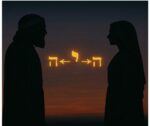
When G‑d promises great wealth to Abram, after Abram refuses the spoils of war offered by the King of Sodom, Abram retorts: What can You
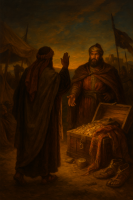
Neither from a thread to a sandal-strap, nor will I take from whatever is yours… (Genesis 14:23) After defeating five kings, Abraham (then called Abram)
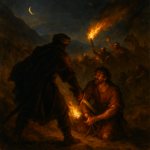
When Abram heard that his kinsman had been taken captive, he mustered his trained men… and went in pursuit. (Genesis 14:14) Abraham just separated from
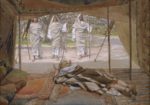
And the Lord appeared unto him in the plains of Mamre, as he sat in the entrance of the tent in the heat of the
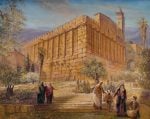
And he [Avraham] spoke with them, saying, “…Listen to me and entreat for me to Ephron the son of Zohar. That he may give me

The months of Tishrei is full of holidays, and they all share a common theme—the unification of time—past, present, and future. It all starts with

And he [Abraham] lifted up his eyes and looked, and, lo, three men stood over against him… (Genesis 18:2) On this blog, we often discuss
And these are the years of the life of Ishmael: one hundred years and thirty years and seven years (Gen. 25,17) You might say the

The blessings and the admonitions of Bechukotai (Leviticus 26:3–27:34) are viewed as the result of entanglement and disentanglement with G‑d respectively.

I grew up in Russia and was raised on the metric system based on decimal arithmetic. When we immigrated to the U.S., I had to
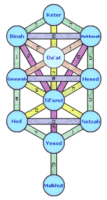
In this Torah portion, Devarim (Deuteronomy 1-3), Moses recalls the travels through the Sinai desert when G‑d told him: Be not at enmity with Moab,
On Seder night we drink four cups of wine and eat three matzoth. Why four cups and not three? Why three matzoth and not four?

It is unsurprising, then, that spiritual phenomena have never been experimentally detected in a laboratory setting. Spirituality, by definition, is non-physical. Consequently, no physical laboratory
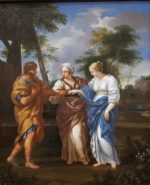
Reading the Torah, sometimes, can give a false impression of reading a story, albeit the greatest story ever written. This Divine drama involves colorful characters,

Give me the Machpelah (double) Cave Genesis 23:9 The first legal acquisition of land in Israel takes place in this Torah portion, Chayei Sarah, when Abraham